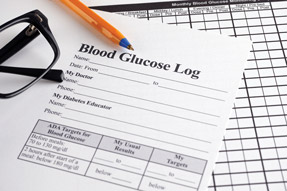Latest diabetes drugs have a learning curve
The onus is on internists to understand the newer classes of incretins such as sodium-glucose cotransporter 2 (SGLT2) inhibitors and dipeptidyl peptidase-4 (DPP-4) inhibitors. They hold promise for better treatments, but they are new and not as well understood as older treatments.
What patient with type 2 diabetes wouldn't rather take a pill than a shot, and lose weight at the same time? But medication management isn't that easy. Newly discovered side effects of new classes of diabetes drugs are still being evaluated, including 1 that prompted a warning from the Food and Drug Administration (FDA). This has not only tempered the excitement over the drugs but has also placed internists in the middle of a changing array of options.
FDA approval doesn't mean everything is known about a drug, especially concerning long-term or off-label usage, said Martin Abrahamson, MBChB, FACP, associate professor of medicine at Harvard Medical School in Boston.

“In fairness, the FDA has a more conservative approach, so if there's any signal of problems in phase III studies then it wouldn't approve [the drug]. But they don't know what long-term usage may cause,” he said. (He disclosed that he is on advisory boards for Novo Nordisk.)
That puts the onus on internists to understand the newer classes of incretins such as sodium-glucose cotransporter 2 (SGLT2) inhibitors and dipeptidyl peptidase-4 (DPP-4) inhibitors, according to experts who talked to ACP Internist.
Discussing those options as part of a treatment plan with patients has to be individualized, taking into account where patients are in their diabetes treatment, their preferences, and costs, said Anne Peters, MD, FACP, director of the University of Southern California clinical diabetes program and professor at the Keck School of Medicine of the University of Southern California, Los Angeles. (She disclosed that she consults for Novo Nordisk, Lilly, Janssen, Merck, CVS Caremark, Optum RX, and AstraZeneca and has received a research grant from Janssen.)
“You need to control costs and risk, and look at the balance,” she said. “It's an art.”
The new warnings
SGLT2 inhibitors, first introduced in 2013, lower blood glucose and weight with a daily oral dose that causes glucose to be lost in the urine. Patients often prefer these drugs to drugs like insulin that lead to weight gain or hypoglycemia.
But SGLT2 inhibitors have recently been linked to 20 cases of diabetic ketoacidosis (DKA), as noted in a May 15 drug safety communication from the FDA.
Dr. Peters has an inside perspective when it comes to the FDA warning. After she began seeing DKA in her patients with type 1 diabetes and then individuals with type 2 diabetes, she talked to other investigators, and then to the FDA. Three of the cases she reported involved patients with type 2 diabetes who were postoperative.
The problem occurs because the drug is still in the patient's system when he or she undergoes surgery, explained Irl B. Hirsch, MD, MACP, professor of medicine at the University of Washington School of Medicine in Seattle. (He receives research funding from Novo Nordisk and Sanofi-USA and consults with Abbott Diabetes Care, Roche, and Valeritas.)
When the anesthesiologist sees blood glucose rise, he or she gives insulin appropriately. But because glucose is lost in the urine, the anesthesiologist doesn't realize that the drug is paradoxically increasing glucagon while the anesthesia itself may be inhibiting insulin secretion, Dr. Hirsch said.
“So insulin is low and glucagon is high, but blood sugar is fine so the anesthesiologist doesn't give insulin and the patient comes out of surgery with blood sugar in the 100s. And when you check the electrolytes, the patient has a liver generating ketones and the patient is in full-blown ketoacidosis,” he said.
As a result, Dr. Peters is recommending that patients stop SGLT2 inhibitors 3 days before elective surgery. “I tell patients, ‘I didn't know the risk when we first started [using this drug], but now I do, and I will update you.’” She hasn't had problems with surgical patients and DKA since.
Given the risk of ketoacidosis, misdiagnosis is a concern. Not everyone is used to seeing ketoacidosis in type 2 patients. Dr. Peters had 1 patient develop it after bariatric surgery. “It took arm twisting to get the ICU team to see that it was DKA,” she said. “All drugs cause side effects. The concern is if people miss it.”
Eugene Wright Jr., MD, senior advisor for medical affairs at Cape Fear Valley Health System in Fayetteville, N.C., advises patients taking SGLT2 inhibitors to check for ketones in their urine if they feel sick. If they see them, he tells them to stop the SGLT2 inhibitor, to hydrate, to increase (not decrease) insulin, and to call him.
“The key is to recognize when you're getting into trouble,” he said. (Dr. Wright disclosed involvement with speakers' bureaus, advisory boards, or consultancies for Eli Lilly, Boehringer Ingelheim, Abbott Diabetes Care, AMGEN, and Voluntis.)
Some of the concern about DKA is that patients with type 1 diabetes are taking it off label, including patients misdiagnosed with type 2 diabetes actually have type 1 disease. While type 1 diabetes used to be primarily a pediatric diagnosis, many patients are now being diagnosed as adults, but it's something not typically on an internist's radar, said Dr. Hirsch. He said he teaches type 1 patients taking this class of drugs to check their ketones if they see high blood glucose levels (e.g., 300 to 400 mg/dL) or if they've been sick with the flu or food poisoning, even if their glucose levels are fine.
“We have a disconnect between what's happening in blood sugar (100s or low 200s) and what's happening in the liver, which is churning out ketones,” he said. He emphasized that nonsophisticated patients and nonsubspecialist physicians should avoid off-label use of SGLT2 inhibitors because it involves so many caveats.
Other diabetes drugs also have notable side effects or cost concerns. DPP-4 inhibitors, for example, may increase the risk of pancreatitis, aren't as robust as other options for lowering HbA1c levels, and are very expensive, although they are an easy-to-tolerate once daily medication, Dr. Peters said.
However, Dr. Abrahamson noted that a July 1 New England Journal of Medicine article didn't show any increase in risk of major adverse cardiovascular events for the class.
Dr. Peters recommended using DPP-4 inhibitors in the appropriate patient who would benefit from the lack of weight gain or hypoglycemia and is relatively close to target. It is important to add them in and see if they reduce HbA1c. “If not, stop and go to something else and if you can get it less expensively, go there,” she said.
Dr. Peters said glucagon-like peptide-1 (GLP-1) receptor agonists are great for the right patient but not for those with a history of pancreatitis or medullary thyroid carcinoma. They are an injectable, given once daily or once weekly, and commonly have gastrointestinal side effects. One completely cardiovascular outcomes trial (ELIXA) using lixisenitide showed cardiovascular safety. Dr. Abrahamson also noted a warning about thyroid cancer but said there is no evidence these drugs are associated with any increased risk of thyroid cancer and are not associated with any adverse cardiovascular outcomes.
Talking to patients
Before jumping into the pond of a new class of drugs, Dr. Peters suggested waiting a year to let subspecialists try it first unless a patient has a special need for that medication. Using new drugs early has a fairly big learning curve, but as your local subspecialists learn the tricks—both in terms of benefits and risks—then they can be more widely disseminated, she said.
Now that the type 2 diabetes drugs are in wider use, physicians who are not comfortable with them have options: Talk to a colleague about the pros and cons, talk or consult with endocrinologists, or refer if needed. Dr. Peters said she's given many curbside consults on SGLT2 inhibitors when colleagues ask and encourages inquiries.
When discussing choice of therapy with patients, Dr. Peters suggested starting by having them talk about their goals and target HbA1c levels.
Then comes what Dr. Abrahamson called “the million-dollar question”: which drug or drugs to use and when to use them. There's currently no broad advice for physicians because there have been no comparative effectiveness studies, he said.
Instead, he said, the answer will depend on how poorly controlled the diabetes is, the patient's age, comorbidities, targeted glucose levels, HbA1c, risks of hypoglycemia, and weight gain. Formulary options will also shape prescribing recommendations.
However, most physicians start prescribing with metformin and then consider adding a second agent if blood glucose targets aren't met. The choices include GLP-1 receptor agonists, SGLT2 inhibitors, DPP-IV inhibitors, sulfonylurea agents, thiazolidinediones, and even insulin, Dr. Peters said.
She recommended discussing the relative risks and benefits of each class of drugs with patients. “Tell them that newer drugs have potential for unknown risks. Say that physicians can't fully characterize the risks until they're used for a couple of years and data about unknown risks are in,” she said. “Some patients want everything new and others are more cautious. But given the current climate of high-profile lawsuits, I think it is helpful to be clear and honest from the start. A patient who knows you will update them as information accumulates is a partner in understanding drug safety, not a victim.”
Offer to look up the drug or read the package insert with patients who are cautious or want more detail, she said.
Physicians should be aware of drugs' potential side effects and counsel patients accordingly, Dr. Abrahamson said. Some side effects, nausea or vomiting, for example, get better with time. If not, the drug should be stopped.
“There's always a period when starting a new drug of determining how good [the drug] is for you, its side effects, and willingness to take a potentially small risk they may uncover some side effect that wasn't apparent before,” he said.
Noting that most drug reactions are dose related, Dr. Peters starts patients on half of the lowest dose of the SGLT2 inhibitor. To avoid side effects, she doesn't always titrate up if the drug is working.
She also doesn't use SGLT2 inhibitors for patients with frequent yeast or bladder infections, since genital mycotic and urinary tract infections are side effects. She has other patients get over-the-counter antifungal cream to use preventively and discusses hygiene with uncircumcised men.
Discussing options with patients includes finding out what's available at the formulary and what insurance will cover.
Dr. Wright, who works at a free clinic where most patients rely on medical assistance programs, looks for teachable moments when talking to patients about “crafting therapy to give them the maximum benefit.”
That includes giving patients handouts, such as those from the National Diabetes Education Initiative, on available medications, and the time to review them with family if desired before talking about a treatment regimen.
“In the final analysis, the best medicine for the patient is the one they will take,” he said.



